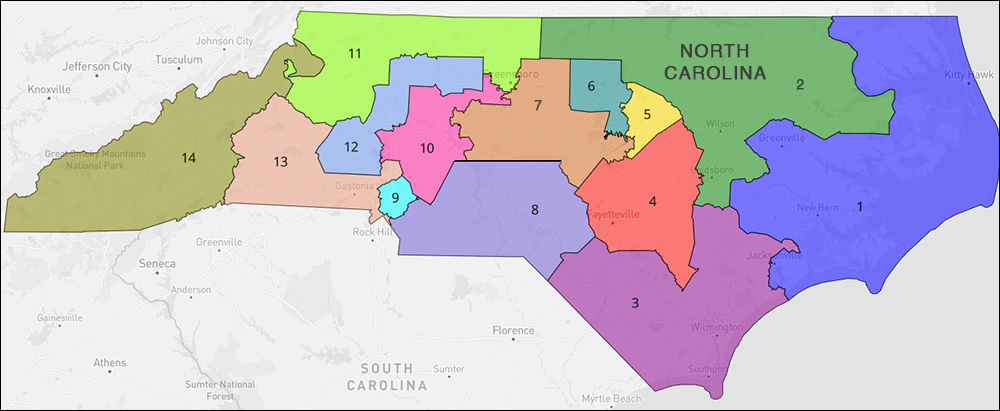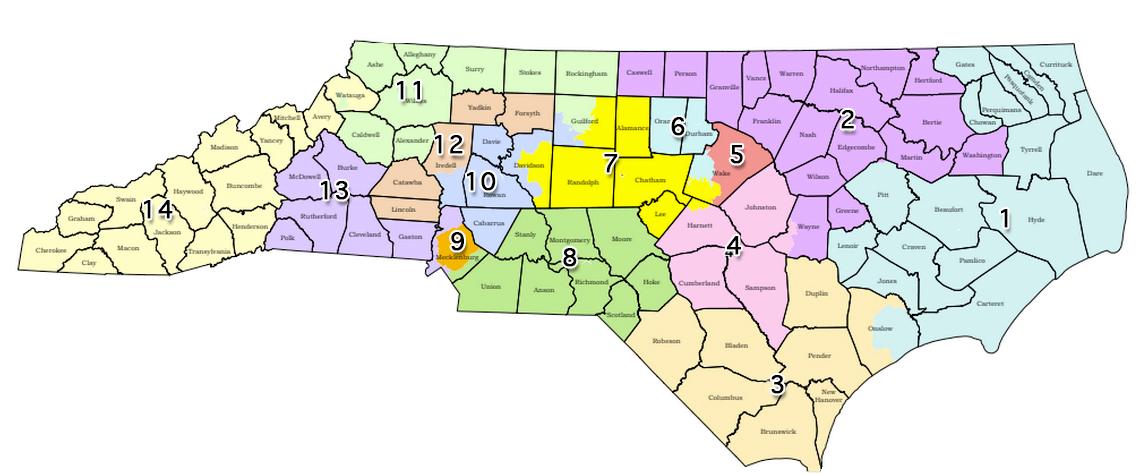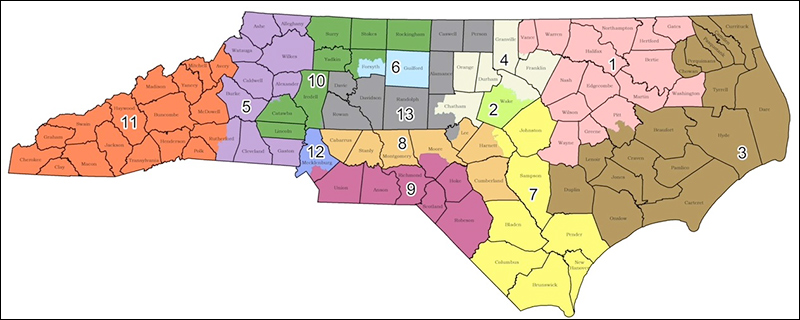
Rejected 2022 North Carolina Congressional Redistricting map (click on map above or here to go to an interactive map at DavesRedistricting.com)
By Jim Ellis
Feb. 8, 2022 — In what has almost been a decade-long game of gerrymander ping pong, the state Supreme Court on Friday rejected the new North Carolina congressional and state legislative maps, thus repeating their actions from the two previous times the panel’s majority disqualified a Republican legislature’s map.
The vote was 4-3, with all four Democrats voting in favor of declaring the map a partisan gerrymander, consistent with their past action, while the three Republicans voted to uphold the plans.
We are again looking at a relatively quick re-draw situation because the twice-postponed North Carolina primary is now scheduled for June 7. If an agreement cannot be reached, it is possible the candidate filing deadline and statewide primary are again postponed.
The high court’s move was expected, but this is a serious setback to Republicans from a national perspective since North Carolina appears to be the only state where the party can gain multiple seats through redistricting.
It is likely that the inter-party pairing of Reps. Virginia Foxx (R-Banner Elk) and Kathy Manning (D-Greensboro) will be re-drawn when a new congressional version is passed. The Greensboro area has been the major focal point of this and the previous maps, with the partisan Republican legislature and partisan Democratic court continuing to battle over a map that will eventually become the state’s 2022 political playing field.
As drawn, the legislature’s map — under North Carolina law and procedure, the governor, in this case Democrat Roy Cooper, has no veto power over redistricting — would have returned either 10 Republicans and 4 Democrats or possibly has high as 11 Republicans and 3 Democrats. Under the current draw, the Republican advantage is 8-5.
North Carolina gained one seat under national reapportionment, and the last iteration of the state Supreme Court map, ordered before the 2020 election, resulted in the Republicans losing two seats, one in Raleigh and the other in the Greensboro area.





 Nov. 20, 2019 — If it seems like the North Carolina redistricting process has dragged on for the entire decade, then your senses are correct, because it has. After seeing a mid-decade re-draw before the 2016 elections, another set of lines will be in place for 2020, and then another plan for the ensuing electoral decade beginning in 2022 will be enacted during the regular decennial process. North Carolina is a sure bet to gain a new congressional seat in 2020 reapportionment.
Nov. 20, 2019 — If it seems like the North Carolina redistricting process has dragged on for the entire decade, then your senses are correct, because it has. After seeing a mid-decade re-draw before the 2016 elections, another set of lines will be in place for 2020, and then another plan for the ensuing electoral decade beginning in 2022 will be enacted during the regular decennial process. North Carolina is a sure bet to gain a new congressional seat in 2020 reapportionment.